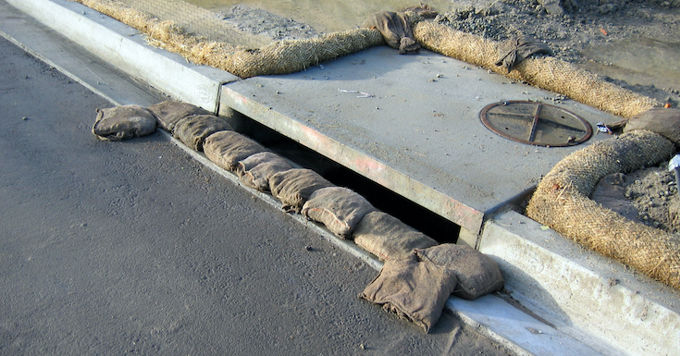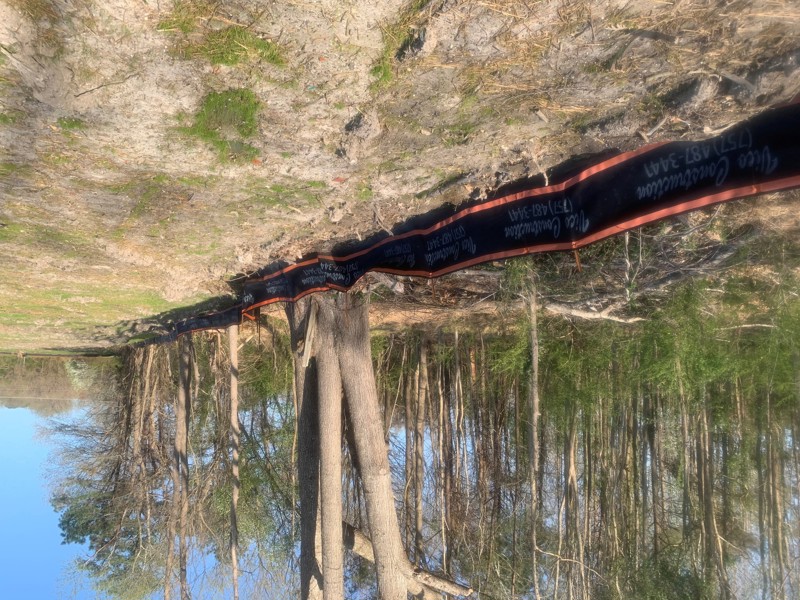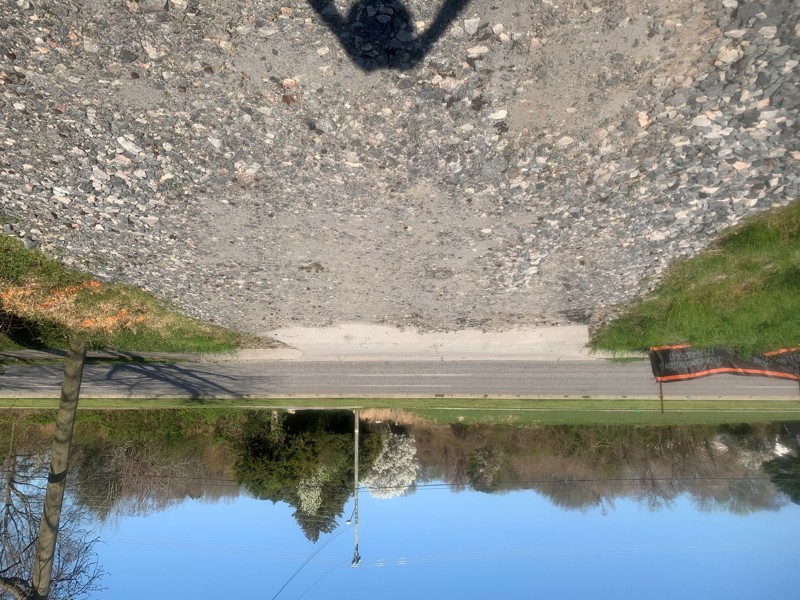
Stormwater Regulations at Virginia Construction Sites
Introduction
This is the first article in a two-part series. In this article, we explain how the legal obligation arose for you to obtain a stormwater permit at your construction site. The forthcoming article will describe the nature of the requirements imposed by that permit and the mechanisms that regulators use to enforce these permit requirements.
How Did Stormwater Come to be Regulated?
It Began With the 1972 Clean Water Act
Like so many things, regulation of stormwater came about in stages.
In the 1960’s the nation reached the point where, in too many places, its waters were too dirty and getting dirtier. It was embarrassing to see the Cuyahoga River in Ohio repeatedly catch fire. Events in 1969 brought matters to crisis pitch. In January a “blowout” at a Union Oil Company oil platform six miles offshore in the Pacific Ocean released 200,000 gallons of crude oil over an eleven-day period, creating an 800 square mile slick, and fouling 35 miles of pristine California coastline near the tony community of Santa Barbara. In June the Cuyahoga River once again burst into flames after sparks from a passing train set fire to an oil slick floating on the surface of the water, making the cover of Time Magazine. These events, combined with the deteriorating overall condition of our waters, stimulated Congress to act. The Clean Water Act (CWA), applicable to all 50 states, became law in 1972. It was a massive piece of legislation, running hundreds of pages, all of it directed toward the goal of cleaning up all “waters of the United States” to a standard of quality defined as “fishable and swimmable.”
Stormwater is one in the variety of pathways that carry pollution into our waters. Stormwater, as the Virginia DEQ explains so well, comes about as a result of precipitation and consists of runoff from streets, lawns, parking lots, construction sites, industrial facilities and other impervious surfaces. Pollution, such as automobile oil, grease, metals, sediment, bacteria from animal waste, fertilizers and pesticides, even deposits from airborne pollutants can contaminate stormwater runoff.
In theory, stormwater was addressed by the 1972 version of the CWA. In practice, however, there was little progress on stormwater. This is not to say that the CWA was not effective as to the other pathways carrying pollution into our waters. The 1972 act launched construction of a considerable number of sewage treatment plants that cut down the amount of raw sewage flowing into our waters (through a federal infrastructure program on a scale comparable to the creation of the interstate highway system) and it also initiated the first set of controls for pollution entering our waters from the “end of the pipe” at industrial facilities. These strategies helped – a lot – but much more was needed if the nation expected ever to have “fishable and swimmable” waters. Toward that end Congress amended the CWA in 1977 and again in 1987, with the 1987 amendments acquiring force of law only after the Congress overrode President Reagan’s veto.
The 1987 CWA Amendments Carried the Seed for Control of Pollution Carried in Stormwater
The 1987 amendments added detailed mandates regarding pollution that stormwater carries into our waterways. The amendments forced a somewhat reluctant EPA to implement a comprehensive program to address stormwater discharges because, in the words of Senator Durenberger (133 Congressional Record -- Senate at page 1279 (Jan. 14, 1987)) “runoff from municipal separate storm sewers and industrial sites contains significant volumes of both toxic and conventional pollutants.” CWA section 402(p) (33 U.S.C. §1342(p)) is the place where the 1987 amendments placed these more detailed commands regarding stormwater into the CWA.

(Stormwater regulations require that the Stormwater Pollution Prevention Plan (SWPPP) be available at the construction site)
Stormwater Regulation Took Hold in the 1990’s With EPA’s Phase I and Phase II Stormwater Regulations
The 1987 CWA amendments prompted EPA to issue regulations in 1990 that, for the first time, imposed pollution controls on stormwater runoff from construction sites (NPDES Permit Application for Storm Water Discharges, 55 Federal Register 47,990 (Nov. 16, 1990)). The 1990 regulations, also known as the “Phase I Stormwater Regulations”, dealt with a variety of stormwater dischargers, including construction sites (among others). The Phase I Stormwater Regulations issued in 1990 required a construction site to have a stormwater discharge permit if activities at the site resulted in land disturbance equal to or greater than five acres. EPA issued the “Phase II Stormwater Regulations” in 1999, which ratcheted the requirement down to a construction site where activities result in land disturbance equal to or greater than one acre, known as a “small construction activity” (NPDES – Regulations for Revision of the Water Pollution Control Program Addressing Storm Water Discharges, 64 Federal Register 68,722 (Dec. 8, 1999)). The EPA stormwater regulations are codified at 40 C.F.R. §122.26.
Now that the stormwater program has matured, EPA gives a high-level overview explanation of its stormwater program with the NPDES Stormwater Program. The EPA gives a more focused explanation of how the stormwater program applies to construction sites with Stormwater Discharges from Construction Activities program.
![]() In Virginia, State and Local Governments Regulate Stormwater at Construction Sites
In Virginia, State and Local Governments Regulate Stormwater at Construction Sites
The CWA encourages states to develop their own legal process for controlling water pollution. So long as the state-developed program is no less stringent than the federal standards set forth in the CWA, the EPA will delegate authority to the state to run the water pollution control program in lieu of the EPA (though the state program remains subject to EPA monitoring and oversight).

(Stormwater regulations require a silt fence ringing the perimeter of the construction site to intercept and detain sediment from areas disturbed by construction operations and to reduce runoff velocity down a slope.)
Virginia developed its own program for controlling stormwater pollution, to include the pollution flowing into state waters in runoff from construction sites. The Virginia Stormwater Management Act is codified at Virginia Code §§62.1-44.15:24 to :50. It works hand in glove with the Virginia Erosion and Sediment Control Law, codified at Virginia Code §§62.1-44.15:51 to :66.
The Virginia Stormwater Management Act encourages localities to establish a “Virginia Stormwater Management Program” by providing grants, technical assistance and training. Under this approach, as is explained by the Virginia DEQ, coverage under a state permit may be required to discharge stormwater from construction activities. In addition, local governments may manage their own stormwater management permit programs, which are separate from the state permit program and from local land disturbance permits. During construction, a separate permit may be required for erosion and sediment control. These land disturbance permits are issued by localities as part of their erosion and sediment control programs, which DEQ periodically reviews.

(A stone-stabilized pad located at points of vehicular ingress and egress removes material from vehicle tires to prevent muddy sediment from being tracked off of the construction site.)
Conclusion
Water that was too dirty in too many places brought matters to crisis pitch in the late 1960’s, especially after a “blowout” at a Union Oil Company oil platform six miles offshore in the Pacific Ocean released 200,000 gallons of crude oil that fouled 35 miles of pristine California coastline near Santa Barbara, along with repeated instances where the Cuyahoga River caught fire in Cleveland. Although some parts of the CWA may be heavy-handed, and perhaps some of the stormwater provisions fall into that category, one authority reminds us that the CWA has delivered benefits since its enactment in 1972, including:
- doubling in the number of waterways safe for fishing and swimming;
- a reduction in industrial discharges by billions of pounds a year;
- a more than doubling in the number of Americans served by adequate sewage treatment;
- a reduction in annual wetland losses by 75% a year; and
- a reduction in soil erosion from cropland by more than a third.
Watch for my next article which will describe the nature of the permit requirements imposed for control of stormwater pollution at construction sites in Virginia, along with the mechanisms that regulators use to enforce these requirements.
Contact Jim Lang if you would like to see him publish more information on stormwater permits in the state of Virginia. Of course, you can always contact Jim for his advice and assistance in connection with any specific needs in your particular construction project.
